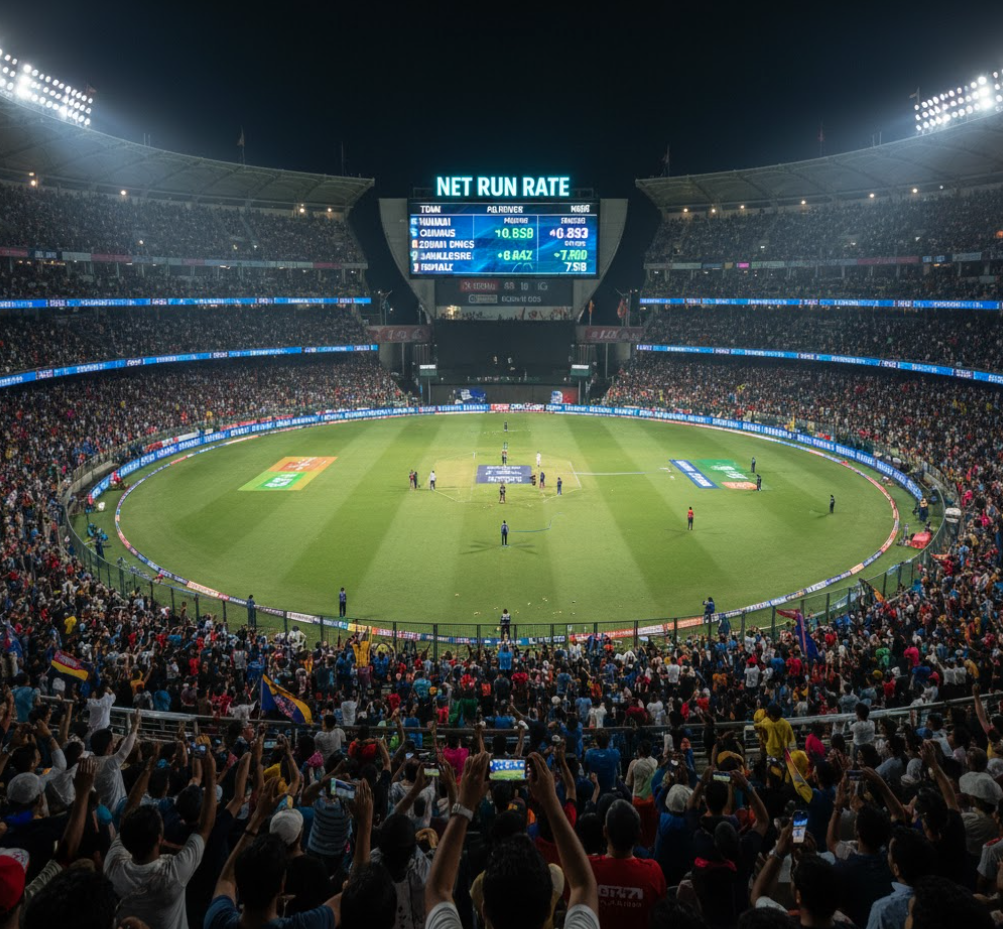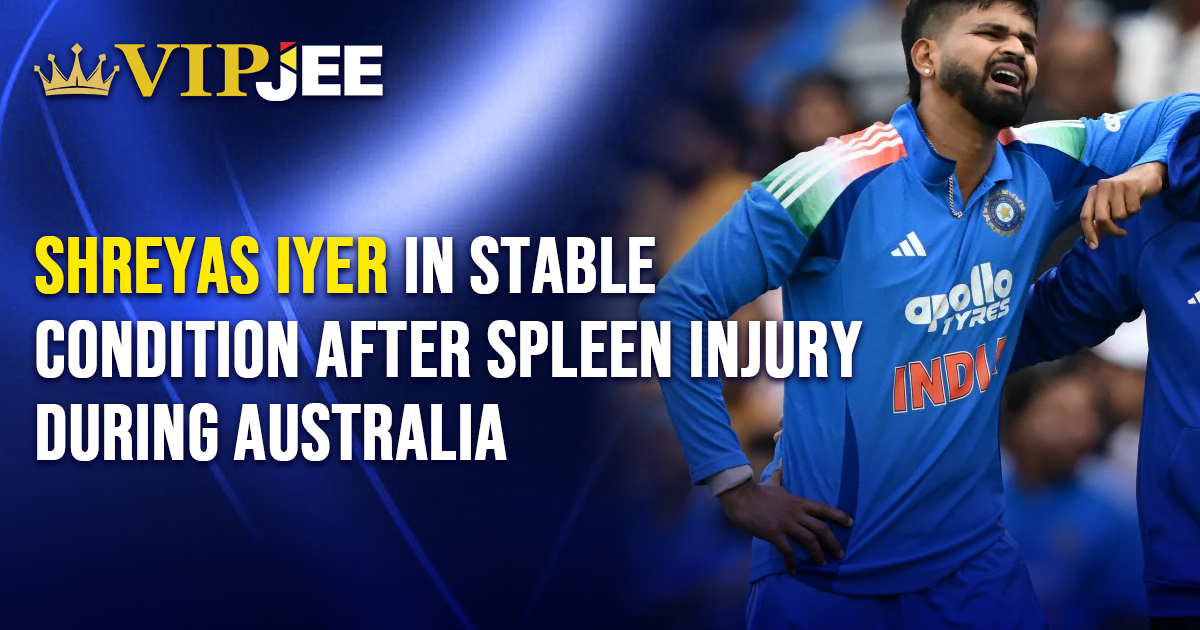Welcome to VIPJEE! As experts in providing sharp clarity and genuine warmth around complex topics, we’re here to demystify one of cricket’s most crucial statistics: the Net Run Rate (NRR). NRR is a significant component in cricket tournaments, often determining which team advances when multiple sides are tied on points. While it might initially seem confusing, understanding the calculation process reveals its straightforward logic and immense importance.
This comprehensive article will break down how Net Run Rate is calculated, explore the special rules applied in major leagues like the Indian Premier League (IPL) in seasons like IPL 2020 and IPL 2021, and discuss the strategic role NRR plays in the modern game.
TLDR
The Net Run Rate (NRR) is a statistical tool used to rank teams that have the same number of points in a league stage. NRR is calculated by subtracting the average runs conceded per over from the average runs scored per over across the entire tournament. The formula is: NRR = (Total runs scored / Total overs faced) – (Total runs conceded / Total overs bowled). Crucially, if a team is bowled out before completing its full quota of overs (e.g., 20 overs in a T20), the calculation uses the full quota of overs, not just the overs faced. A positive NRR indicates strong performance, while a negative NRR means the team is conceding runs faster than it is scoring them.
The Core Definition and Critical Importance of Net Run Rate
Net Run Rate (NRR) is a statistical metric used in cricket to measure a team’s overall performance relative to its opponents. Introduced during the 1992 ODI World Cup, NRR has since become the most preferred tie-breaker method in multi-team tournaments, especially those utilizing a round-robin league format. Unlike a simple win-loss record, NRR gives a clearer picture of how convincingly a team has performed across the tournament.

NRR as the Ultimate Statistical Tiebreaker
In highly competitive leagues like the IPL, it is common for teams to finish on equal points. When this “traffic jam” occurs in the points table, the side with the higher NRR moves ahead. NRR ensures fairness and reliability in the ranking system where large amounts of money and reputation are invested. For instance, in the 2019 Cricket World Cup, New Zealand advanced past Pakistan due to a superior NRR, despite both teams finishing on equal points. Similarly, in the IPL 2022, Royal Challengers Bengaluru qualified for the playoffs over Delhi Capitals thanks to a better NRR.

Origin and Role in Modern Limited-Overs Cricket
NRR was specifically designed for limited-overs cricket (such as ODIs, T20s, and T10s) where the number of overs plays a significant role in determining the result. Since its introduction in the 1992 ODI World Cup, it has replaced less satisfactory tie-breaking methods. The ability of a team to score runs quickly while simultaneously restricting opponents’ scoring is reflected directly in this metric. NRR generally does not apply to Test cricket, as overs played have minimal significance in that format.
NRR vs. Goal Difference: Understanding the Concept
The concept of Net Run Rate is often compared to ‘Goal Difference’ used in football leagues. While goal difference measures the total goals scored minus total goals conceded, NRR is slightly more nuanced: it measures the difference between run rates. It compares the average runs scored per over by the team (Run Rate For) against the average runs conceded per over by the opposition (Run Rate Against). This focus on the rate (runs divided by overs) makes NRR a more reflective performance indicator than merely the total run difference.
Step-by-Step Guide: Calculating the Net Run Rate Formula
Calculating the Net Run Rate (NRR) involves three primary steps, combining statistics from all matches played by a team in a tournament. The NRR for a team is calculated cumulatively over the entire competition, not on a match-by-match basis.
The fundamental formula is:

Defining Run Rate For (Total Runs Scored)
The first component is the team’s Run Rate For (Run Rate). This is calculated by taking the Total Runs Scored by the team throughout the tournament and dividing it by the Total Overs Faced by the team during those innings.
Calculation of Team’s Run Rate:

It is crucial to note that overs must be treated accurately. If an innings involves incomplete overs, the fraction of the over is used in the division. For example, 47.2 overs (47 overs and 2 balls) is calculated as 47 + (2/6) or approximately 47.33 overs.
Defining Run Rate Against (Total Runs Conceded)
The second component is the Opposition’s Run Rate (Run Rate Against). This involves summing up the Total Runs Conceded by the team and dividing that by the Total Overs Bowled by the team across the competition.
Calculation of Opposition’s Run Rate:

Similar to the ‘Run Rate For’ calculation, if the opponent was all out, specific rules regarding the total overs bowled apply, which will be detailed in the next section.
Calculating NRR: Team Run Rate minus Opposition Run Rate
Once both rates are calculated, the Net Run Rate is determined by subtracting the opposition’s run rate from the team’s run rate.
NRR=Team’s Run Rate (For)−Opposition’s Run Rate (Against)
NRR can result in a positive or a negative figure. A positive NRR signifies that the team is scoring runs faster than its opponents, which is generally indicative of strong performance and a favorable position in the standings.
Example of Single Match Calculation: Suppose Team A scores 250 runs in 50 overs and restricts Team B to 200 runs in 50 overs.
| Statistic | Team A (Run Rate For) | Team A (Run Rate Against) |
| Runs | 250 | 200 |
| Overs | 50 | 50 |
| Calculation | $250 \div 50 = 5.00$ | $200 \div 50 = 4.00$ |
Team A’s NRR for this match: $5.00 – 4.00 = +1.00.
Navigating Special Rules and Calculation Exceptions
While the basic formula is straightforward, calculating NRR accurately requires adhering to specific rules that handle incomplete innings, weather disruptions, and match outcomes. These details ensure that the NRR remains a fair measure of performance.
The ‘All Out’ Rule: Using the Full Quota of Overs
One of the most critical rules in NRR calculation involves an all-out innings. If a team is bowled out (all out) before playing its full quota of overs (e.g., 20 overs in a T20 or 50 in an ODI), the calculation of its run rate must be based on the full quota of overs to which it was entitled, and not on the actual number of overs faced.
This prevents a team from intentionally throwing wickets away early to artificially inflate their NRR by shortening the denominator. For example, if a team is all out for 120 in 16.4 overs in a 20-over match, the NRR calculation uses 20 overs (20.0) as the denominator, not 16.4 overs.
Conversely, if a team successfully chases a target, only the actual number of overs faced to win the match is counted in the ‘Total Overs Faced’ metric. If they win in 19.1 overs, 19.1 is used; 20 overs is only used if they had been bowled out.
Impact of Rain and the Duckworth-Lewis-Stern (DLS) Method
In matches shortened due to rain or other delays, the Duckworth-Lewis-Stern (DLS) method is applied to set a revised target. When DLS is used, the runs scored and conceded are adjusted for NRR calculation purposes.
The rules for DLS-affected matches are complex but aim to standardize the input:
- Match Abandoned with DLS Result: If a match is abandoned but a result is achieved under DLS, the team batting first (Team 1) is accredited with the score of the team batting second (Team 2) Par Score on abandonment, using the same number of overs faced by Team 2.
- Match Concluded with Prior DLS Application: If a match concludes after DLS was applied earlier, Team 1 is accredited with 1 run less than the final Target Score for Team 2, using the total number of overs allocated to Team 2 to reach that target.
- Abandoned without Result: Matches that are abandoned with no definitive results, such as a match washed out before one inning is completed, are not considered for NRR calculations.
Super Overs and Forfeited Matches: Separate Statistics
Certain match outcomes are treated distinctly:
- Super Overs: Super Overs, which are used to determine the winner of a tied match, do not impact NRR calculations. They are treated separately from general match statistics.
- Forfeited Matches: In the event of a match being forfeited, the team receiving the forfeit is typically awarded the maximum possible NRR boost for that match. This is generally calculated as if the forfeiting team scored 0 runs in their allotted overs, and the receiving team scored the maximum possible score (e.g., 400 or more in ODIs) in just one over.
The Role of NRR in the Indian Premier League (IPL)
The IPL, being a highly competitive T20 league, relies heavily on NRR to sort out the final playoff positions. As the league stage concludes, teams often engage in precise mathematical calculations to determine the exact margin of victory or defeat needed to secure a spot.
NRR in IPL 2020 and the Mumbai Indians Record
The IPL 2020 season, in particular, highlighted how important massive margins of victory can be. The Mumbai Indians (MI) showcased exceptional dominance that year. As of the 2021 IPL season, the Mumbai Indians hold the record for the highest NRR in a single IPL season, achieving a remarkable +1.107 in 2020. This exemplary figure demonstrates how teams that score fast when batting and severely restrict opponents when bowling maximize their NRR advantage.
Teams in the IPL are incentivized not just to win, but to win by a substantial margin. For example, a team scoring 200 in 20 overs and bowling the opponent out for 100 gives a massive NRR boost for that match.
IPL Tie-Breaker Rules Beyond Net Run Rate
While NRR is the primary tie-breaker, the IPL playing conditions define further criteria if two or more teams finish with equal points, the same number of wins, and the same Net Run Rate. According to IPL regulations (Law 16.10 titled ‘The League Table’), the hierarchy for tie-breaking is as follows:
- Equal Points & Wins: Team with the higher NRR is placed higher.
- Equal Points, Wins, & NRR: The team with the highest number of wickets taken in matches between the tied teams is preferred (though this rule is not explicitly mentioned in the sources as the final official tie-breaker after NRR, a source suggests that teams with the highest number of wickets will be preferred in this scenario). Note: The source specifies “highest number of wickets” but does not explicitly state if this is cumulative over the tournament or specific to the matches between the tied teams.
- All Criteria Equal: The league position is finally determined by drawing lots.
Analyzing NRR in an IPL Context (The 20-Over Quota)
To illustrate the ‘all out’ rule specifically in a T20 context, consider a match example:
Scenario: KKR vs SRH (IPL Example)
- Kolkata Knight Riders (KKR) score: 200/6 in 20 overs.
- Sunrisers Hyderabad (SRH) score: 120/10 in 16.4 overs (All Out).
Since SRH was bowled out, the full quota of 20 overs is used for the Run Rate Against calculation for KKR.
KKR’s NRR Calculation for this specific match:
| Component | Runs | Overs | Rate |
| KKR Run Rate For | 200 | 20.0 | $200 \div 20 = 10.00 |
| KKR Run Rate Against (SRH All Out) | 120 | 20.0 | $120 \div 20 = 6.00 |
| KKR NRR Boost | $10.00 – 6.00 = +4.00 |
If KKR were calculating their overall tournament NRR, they would sum up their runs and overs faced/bowled from this match with all previous games (similar to the cumulative calculation for Chennai Super Kings in IPL 2025).
CSK Cumulative Example (Hypothetical IPL 2025 Standings) As of a point in the IPL 2025 season, Chennai Super Kings (CSK) might have the following cumulative data:
| Statistic | Value |
| Total Runs Scored | 1440 |
| Total Overs Faced (Adjusted) | 178.4 (approx 178.67 overs) |
| Total Runs Conceded | 1540 |
| Total Overs Bowled (Adjusted) | 164.3 (approx 164.5 overs) |
- CSK Run Rate For: 1440 \div 178.67 \approx 8.06
- CSK Run Rate Against: 1540 \div 164.5 \approx 9.36
- CSK NRR: 8.06 – 9.36 = -1.30
This example illustrates how a negative NRR (-1.302 as cited in the source) can occur if a team has conceded more runs in fewer overs than they have scored runs in their innings. This can happen even if they won some matches, but the margin of losses was large, or the margin of wins was small.
Strategic Implications and Common NRR Misconceptions
NRR is not only a measurement tool but also an influencing factor in team strategies. Teams frequently calculate the required margins in crucial matches, adapting their batting and bowling approaches accordingly. However, the cumulative nature of NRR leads to several common misconceptions among fans and sometimes even players.
Why Winning Doesn’t Always Guarantee an NRR Increase
A major misconception is that winning a match automatically improves a team’s Net Run Rate. This is not always true. NRR is calculated over the entire tournament. If a team has a very high NRR from earlier, dominant victories, a subsequent narrow win might actually reduce their average run rate over the season, thereby causing the overall NRR to decrease.
For example, if Team A wins its first match by a huge margin (high match NRR) and then wins its second match by just 1 run (low match NRR), the overall cumulative NRR will likely decrease, although it will remain positive. To ensure NRR increases, a team needs to win by a margin that is better than its existing overall average performance.
Strategic Planning: Improving NRR through Margin of Victory
To improve NRR, teams must focus on winning by large margins. This involves two simultaneous goals:
- When Batting: Scoring quickly and maximizing the runs scored per over.
- When Bowling: Limiting the opponent’s runs and bowling them out as early as possible.
When a team is batting second and chasing a small target, finishing the chase quickly (using fewer overs) significantly boosts the NRR because the ‘Total Overs Faced’ denominator remains small. Conversely, if a team is already losing, the strategy shifts to minimizing the damage: aiming to bat the full quota of overs to increase the ‘Total Overs Bowled’ denominator, thereby reducing the negative margin impact.
Exploring Alternatives: Net Relative Run Rate (NRRR)
The existing NRR method has faced criticism, primarily because it does not take into account wickets lost. A team that wins by a narrow one-wicket margin might still end up with a high NRR if they chased down the target quickly, ignoring the precariousness of their victory.
To address this perceived flaw, an alternative system called Net Relative Run Rate (NRRR) was developed by umpire Keshav S Kolle and V Jayadevan (the inventor of the VJD method). NRRR is designed to evaluate the “authority of match-wins” and factors in the wickets fallen. The NRRR method is considered more balanced because it uses Par Scores (derived from DLS or VJD methods) at the point of the chase, considering wickets lost. This results in a much smaller deficit for the losing team to overcome compared to the calculation under NRR, giving a fairer chance for teams to recover in the tournament standings. This method has seen successful implementation in domestic Indian tournaments like the Maharani T20 Cup and Maharaja T20 Cup.
Conclusion: NRR’s Enduring Role in Tournament Fate
The Net Run Rate is more than just a complex statistic; it is a critical measure that reflects a team’s efficiency and overall performance across a tournament. While it may have special rules regarding all-outs, DLS applications, and the exclusion of Super Overs, the underlying calculation is straightforward: the difference between average runs scored per over and average runs conceded per over.
NRR remains the crucial tiebreaker in highly competitive leagues such as the IPL, often deciding playoff spots, as demonstrated by historical performance records like the Mumbai Indians’ impressive NRR in IPL 2020. By focusing on achieving dominant wins and minimizing margins of defeat, teams can strategically manage and improve their NRR, influencing their fate long before the final matches are played. For fans tracking their favorite teams, utilizing an online Net Run Rate Calculator simplifies the process, allowing greater enjoyment of the competition without the burden of manual calculations.
Frequently Asked Questions (FAQs)
Q1: What is the NRR formula used in the IPL?
The formula used for NRR calculation in the IPL is the standard global formula: NRR = (Total runs scored by team / Total overs faced by team) – (Total runs conceded by team / Total overs bowled by team). The IPL rule book explicitly states that if a team is all out, the full quota of overs (20 overs) is used in the calculation, not the number of overs actually faced.
Q2: How does the “All Out” rule affect Net Run Rate calculation?
If a team is all out before completing its full quota of overs (e.g., bowled out in 15 overs in a T20), the NRR calculation uses the full allotted overs (20 overs) as the denominator. This means getting all out quickly does not benefit the team’s NRR. Teams are advised to use all available overs to score more runs, rather than trying to throw wickets away.
Q3: How is Net Run Rate calculated in rain-affected matches?
In rain-affected matches where a result is achieved via the Duckworth-Lewis-Stern (DLS) method, the runs scored and overs faced are adjusted based on the revised targets and revised overs allocated to the chasing side. For the purpose of NRR, if DLS has been applied, Team 1 (batting first) is generally credited with 1 run less than the revised target score given to Team 2, off the total overs allocated to Team 2.
Q4: Can a team with a lower NRR still qualify for the playoffs?
Yes. NRR only comes into effect as a tiebreaker when two or more teams are level on points. If a team has more points than others, they will qualify regardless of their NRR.
Q5: Who holds the record for the highest NRR in an IPL season?
As of the 2021 IPL season, the Mumbai Indians (MI) hold the record for the highest NRR in a single IPL season, achieving +1.107 in 2020. This demonstrates the power of consistent and dominant victories that year.
Q6: Do Super Overs count toward Net Run Rate?
No, Super Overs, used to decide the winner of a tied match, are treated separately and do not count toward the cumulative runs scored or overs faced for NRR calculations.




